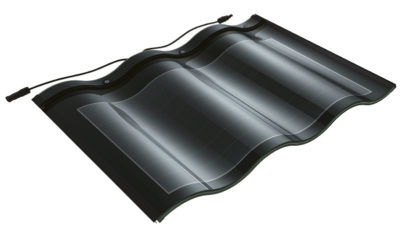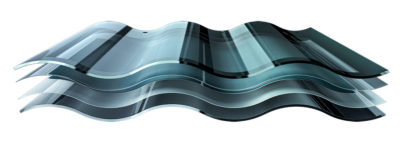The Adoption of HANTILE Solar Roofing Tiles in Kenya

The adoption of HANTILE Solar Roofing Tiles in Kenya is rapidly becoming a hot topic among students, professionals, and stakeholders in the Kenyan construction industry. As the demand for sustainable, energy-efficient building materials grows, HANTILE tiles—known for their sleek design and integrated photovoltaic technology—are poised to transform how Kenyans think about both roofing and energy generation.
What Are HANTILE Solar Roofing Tiles?
Definition and Core Features
HANTILE Solar Roofing Tiles are advanced roofing materials that integrate thin-film photovoltaic (PV) technology directly into the tile structure, allowing roofs to generate electricity while maintaining traditional aesthetics. Unlike conventional solar panels, HANTILE tiles are designed to blend seamlessly with standard roofing, making them an attractive option for new builds and major renovations.
Key Technical Specifications
| Property | Specification |
|---|---|
| Auxiliary Materials | Protector & EPDM film |
| Illuminated Surface Size | 703 mm x 415 mm |
| Tiles per Square Meter | 3.43 pcs/square meter |
| Power per Tile | 30 Watt |
| Power per Square Meter | 105 Watt |
| Structure | Super white curved glass, POE film, Miasole Flex Cell, MC4 connectors |
| Durability | Fire, hail, heat, and humidity tested |
| Warranty | 25 years manufacturer warranty |
How Do HANTILE Tiles Work?
HANTILE tiles use thin-film solar cells embedded between layers of curved glass and protective films. When sunlight hits the tile, the PV cells convert solar energy into electricity, which can be used on-site or fed back into the grid. The design ensures maximum use of the tile’s visible surface for energy production, and the MC4 connectors allow for quick, safe installation.
Related Questions
How efficient are HANTILE tiles compared to traditional solar panels?
HANTILE tiles leverage high-efficiency thin-film technology, with Hanergy modules recently achieving up to 25.1% efficiency in lab settings, though real-world performance may be slightly lower.Can HANTILE tiles be installed on any roof?
While ideal for new builds, retrofitting existing roofs may require significant structural adjustments to ensure proper installation.
The Kenyan Context: Why Are Solar Roofing Tiles Gaining Attention?
Market Trends and Adoption Drivers
Kenya’s construction sector is increasingly embracing smart, sustainable technologies. Solar roof tiles—also called solar shingles—are gaining traction due to their dual function as both roofing and energy generators, reducing the need for separate solar panel installations. This is especially relevant in a country where energy costs are high and grid reliability can be inconsistent.
Key Entities
| Entity | Role in Adoption |
|---|---|
| Strauss Energy | Local manufacturer and installer |
| Hanergy (HANTILE) | International supplier |
| Kenya Power (KPLC) | Grid integration and buy-back |
| Energy Regulatory Commission | Policy and regulation |
| Construction Firms | Implementation and advocacy |
| Educational Institutions | Early adopters (e.g., Gaitheri Secondary School) |
Case Studies: Early Adoption in Kenya
Gaitheri Secondary School, Murang’a County: One of the first institutions to install solar roofing tiles, enabling students to access reliable electricity for learning and digital tools.
Strauss Energy Projects: Over 1,400 households have adopted BIPV (Building Integrated Photovoltaic) tiles, with ambitions to reach 35,000 homes.
Table: Comparison of Solar Roofing Tiles in Kenya
| Product | Power Output (W) | Tile Size (mm) | Local Availability | Typical Use Cases |
|---|---|---|---|---|
| HANTILE | 30/tile, 105/m² | 721 x 500 x 41 | Import (Hanergy) | Upscale homes, schools |
| Strauss Stima Tile | 8–150/tile | 443x320 to 1532x700 | Local (Strauss) | Homes, offices |
Related Questions
What is the cost of HANTILE solar roofing tiles in Kenya?
Prices for solar roof tiles in Kenya range from Ksh2,300 to Ksh29,500 per tile, depending on size and technology. HANTILE, as a premium imported product, may be at the higher end of this range.Who are the main adopters of solar roof tiles in Kenya?
Early adopters include educational institutions, estate developers, and some upscale residential projects.
Benefits and Challenges of HANTILE Solar Roofing Tiles
Advantages
Aesthetic Integration: HANTILE tiles maintain the traditional look of tiled roofs, appealing to developers focused on design and curb appea.
Energy Generation: Each tile generates electricity, helping users reduce or eliminate electricity bills and even sell excess power back to the grid.
Durability: Tested for fire, hail, and extreme temperatures, HANTILE tiles offer long-term reliability.
Sustainability: Reduces reliance on fossil fuels and supports Kenya’s renewable energy goals.
Table: Benefits of HANTILE vs. Traditional Solar Panels
| Feature | HANTILE Solar Tiles | Traditional Solar Panels |
|---|---|---|
| Aesthetics | Seamless, tile-like | Bulky, visible panels |
| Roof Integration | Full roof replacement | Mounted on existing roof |
| Durability | Fire, hail, weather tested | Varies by panel |
| Installation Complexity | Higher for retrofits | Moderate |
| Upfront Cost | Higher | Lower |
| Maintenance | Similar | Similar |
Challenges
Cost: Higher upfront investment compared to traditional roofing or solar panels, making it less accessible for low-income households.
Installation: Best suited for new builds; retrofitting existing roofs can be complex and costly.
Market Awareness: Adoption is still limited by lack of awareness and trust in new technologies.
Efficiency: While improving, solar tiles may still lag behind the highest-efficiency traditional panels in some cases.
Related Questions
How long do HANTILE solar tiles last?
HANTILE tiles come with a 25-year manufacturer warranty and are estimated to last up to 30 years.Are there government incentives for installing solar tiles in Kenya?
Policy changes are encouraging solar adoption, especially for buildings with high hot water usage, but direct incentives for solar tiles are still evolving.

Installation Process and Technical Considerations
How Are HANTILE Solar Roofing Tiles Installed?
The installation of HANTILE Solar Roofing Tiles involves replacing conventional roofing materials with solar-integrated tiles, ensuring both weatherproofing and energy generation. The tiles are designed to be laid during new construction or major roof renovations, with each tile connecting via high-quality MC4 connectors for rapid and safe installation. The curved glass design and thin-film technology allow for maximum surface area exposure to sunlight, optimizing energy yield even under less-than-ideal conditions.
Steps in the Installation Process
Roof Preparation: Ensure the roof structure can support the weight and layout of HANTILE tiles.
Tile Placement: Lay tiles in overlapping rows, similar to traditional tiles, ensuring waterproofing and ventilation features are maintained.
Electrical Integration: Connect the photovoltaic tiles using MC4 connectors, routing wiring to an inverter and battery storage system as needed.
System Testing: Perform electrical and waterproofing tests to confirm system integrity and safety.
| Step | Description | Key Consideration |
|---|---|---|
| Roof Preparation | Assess structure, remove old roofing | Load-bearing capacity |
| Tile Placement | Overlap tiles, maintain alignment | Waterproofing, ventilation |
| Electrical Wiring | Connect MC4 connectors, route to inverter | Safety, code compliance |
| System Testing | Test power output, check for leaks | Performance, reliability |
Related Questions
Can HANTILE tiles be retrofitted onto existing roofs?
While possible, retrofitting may require structural reinforcement and careful integration with existing materials, often making it more cost-effective for new builds.How long does installation take?
Installation time varies by project size but is generally comparable to traditional roofing plus the time for electrical integration.
Maintenance and Longevity
What Maintenance Do HANTILE Tiles Require?
HANTILE tiles are designed for minimal maintenance. The tempered glass surface is durable and resistant to weather, but periodic cleaning is recommended to remove dust and debris, especially in dusty or urban environments. Electrical connections should be inspected annually by a qualified technician to ensure ongoing performance.
Routine Cleaning: Use water and a soft brush or cloth.
Annual Inspection: Check for loose connections, damaged tiles, or shading issues.
Warranty Support: HANTILE tiles come with a 25-year manufacturer warranty, covering defects and performance1.
Related Questions
How do HANTILE tiles perform in Kenya’s climate?
The tiles are tested for resistance to fire, hail, heat, and humidity, making them well-suited for Kenya’s varied weather conditions.What is the typical lifespan of HANTILE tiles?
With proper care, HANTILE tiles can last 25–30 years, matching or exceeding the lifespan of conventional roofing materials.
Policy and Regulatory Environment
What Is the Policy Landscape for Solar Roofing Tiles in Kenya?
Kenya has made significant policy moves to encourage solar adoption. The Energy Regulatory Commission mandates solar water-heating systems for buildings using over 100 liters of hot water daily, and there is a broader push for integrating solar energy into both new and existing buildings. While direct incentives for solar tiles are still evolving, the trend is toward greater support for renewable energy solutions.
| Policy/Regulation | Impact on Solar Tile Adoption |
|---|---|
| Solar Water Heating Mandate | Drives demand in commercial/residential |
| Import/Local Manufacturing Policies | Affects cost and availability |
| Building Codes | Increasingly require energy efficiency |
| Grid Feed-in Tariffs | Enable sale of excess solar power |
Related Questions
Are there financial incentives for installing solar tiles?
While Kenya’s solar incentives focus mainly on water heating and grid feed-in, future policies may expand to include BIPV solutions like HANTILE.How does policy affect adoption rates?
Policy shifts are crucial for mainstreaming solar tiles, especially as construction industry acceptance grows and manufacturing scales up.
Local Adoption: Case Studies and Impact
Gaitheri Secondary School, Murang’a County
A standout example is Gaitheri Secondary School, which installed 300 Strauss Energy solar tiles, providing reliable, emissions-free electricity for 275 students and enabling digital learning after dark. The project demonstrates the transformative impact of BIPV technology in rural Kenya, where grid power is unreliable or unavailable.
Table: Impact of Solar Roofing Tiles in Kenyan Schools
| School/Project | Tiles Installed | Power Output | Key Benefits |
|---|---|---|---|
| Gaitheri Secondary | 300 | 300 kW | Reliable power, digital access |
| Strauss Energy Pilot | 1,400+ homes | Varies | Off-grid, clean energy |
Related Questions
How are solar roofing tiles improving education?
Reliable power enables extended study hours, computer labs, and access to e-learning resources, directly impacting student performance.What other sectors benefit from solar tiles?
Estate developers, hospitals, and commercial buildings are also adopting BIPV for energy savings and sustainability.
Market Penetration, Cost, and Future Outlook
How Widely Are HANTILE Tiles Used in Kenya?
Market penetration remains limited due to high upfront costs and industry conservatism, but adoption is growing in schools, estates, and upscale developments. As local manufacturing increases and policy support grows, costs are expected to decrease, making the technology accessible to a wider market.
| Factor | Current Status | Future Outlook |
|---|---|---|
| Cost per Tile | $20–$250 (Ksh2,300–Ksh29,500) | Expected to fall with scale |
| Main Users | Schools, estates, commercial projects | Broader adoption anticipated |
| Manufacturing | Strauss Energy (local), Hanergy (import) | Local capacity expanding |
| Policy Support | Growing, but still limited | Likely to increase |
Related Questions
What is the cost-benefit for homeowners?
While upfront costs are higher than standard roofing, long-term savings on energy bills and potential income from selling excess power make solar tiles a compelling investment.Will solar tiles replace traditional panels?
For some markets—especially where aesthetics and integration matter—solar tiles are likely to become the preferred option, but traditional panels will remain popular for their lower cost and flexibility.
Frequently Asked Questions
How do HANTILE solar roofing tiles compare to traditional solar panels?
HANTILE tiles offer seamless roof integration and aesthetics but are generally more expensive and slightly less efficient than conventional panels
Can HANTILE tiles be used for both new builds and retrofits?
Yes, but they are best suited for new constructions or major renovations due to installation complexity
What is the warranty on HANTILE tiles?
HANTILE tiles come with a 25-year manufacturer warranty, covering defects and performance.
Are there government incentives for solar roofing tiles in Kenya?
Current incentives focus on solar water heating and grid feed-in, but policy is evolving to support broader solar adoption
Are there local suppliers or installers for HANTILE tiles in Kenya?
Strauss Energy produces and installs similar BIPV tiles locally, while HANTILE tiles may be imported via Hanergy’s network
How much power can a typical HANTILE roof generate?
Each tile produces 30W; a square meter can generate 105W, with system size tailored to building needs
What maintenance is required for HANTILE tiles?
Minimal: periodic cleaning and annual electrical inspections are recommended
How are solar tiles impacting rural electrification?
They provide reliable, off-grid power for schools and homes, improving education and quality of life in rural areas






